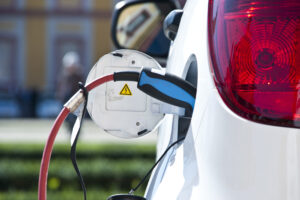
GM aims to accelerate ‘affordable’ EV batteries through new investment
By onTechnology
General Motors (GM) says it has invested $60 million in lithium-ion battery material producer Mitra Chem to accelerate its commercialization of affordable electric vehicle (EV) batteries.
The companies said that they’ll develop advanced iron-based cathode active materials (CAM) such as lithium manganese iron phosphate (LMFP) to advance “affordable and accessible” EV batteries compatible with GM’s EV lineup.
“This is a strategic investment that will further help reinforce GM’s efforts in EV batteries, accelerate our work on affordable battery chemistries like LMFP and support our efforts to build a U.S.-focused battery supply chain,” said Gil Golan, GM’s vice president of technology acceleration and commercialization. “GM is accelerating larger investments in critical subdomains of battery technology, like cell chemistry, components and advanced cell production processes. Mitra Chem’s labs, methods and talent will fit well with our own R&D team’s work.”
Mitra Chem said it is building the first North American lithium-ion battery materials product company and that its technology and processes shortens the lab-to-market timeline by more than 90%.
“Mitra Chem is one of the only companies taking a multi-faceted approach by combining R&D [research and development], machine learning acceleration, and manufacturing to supply battery materials to OEM and battery cell customers,” it said in a press release.
“Mitra Chem’s battery R&D facility can synthesize and test thousands of cathode designs monthly, ranging in size from grams to kilograms – these processes drive significantly shortened learning cycles, enabling shorter time to market for new battery cell formulas.”
GM is working to bring down EV costs as some surveys indicate that high price points are among their top deterrents preventing them from buying one.
“Although the affordability factor is approaching parity, it is skewed by the premium market, driven largely by Tesla’s 63% EV market share— and their continual price cuts,” said Elizabeth Krear, vice president of J.D. Power’s electric vehicle practice. “In the high-volume segments like compact SUV and large pickup-light duty, affordability scores are at 80 [out of a possible 100]. The glaring hole is that no EV options exist in the huge midsize SUV segment.”
Some OEMs, including Tesla and Lucid, have made price cuts to their models.
Vivas Kuma, Mitra Chem’s CEO and co-founder, said the processes his R&D facility has developed will go beyond helping GM bring affordable EVs to market.
“GM’s investment in Mitra Chem will not only help us develop affordable battery chemistries for use in GM vehicles but also will fuel our mission to develop, deploy and commercialise U.S. made, iron-based cathode materials that can power EVs, grid-scale electrified energy storage and beyond,” Kuma said in a press release.
In an unrelated development, GM’s Ultium Cells battery plant in Warren, Ohio is under investigation, and operations were temporarily suspended following a chemical leak at the facility.
Among automakers, the race is on to bring more affordable EVs to market and secure long-term, reliable sources for the parts needed to make them.
Volkswagen announced this week that it’s reorganizing its procurement of electronic parts and semiconductors to ensure long-term supply stability. It said it has developed a new strategy to buy parts with electronic components.
“A high degree of transparency in the semiconductor value chain – the exact knowledge of the parts used – enables us to better determine the global demand and availability of these components,” said Dirk Grosse-Loheide, board member for procurement of Volkswagen passenger cars.
He added: “This is underscored by risk management which, in [the] future, will extend to the level of individual electronic parts and help us detect bottlenecks early on and avoid them. For strategically important semiconductors and even the Group’s own planned developments in the future, we will rely on direct purchasing from the semiconductor manufacturers.”
Meanwhile, a new analysis by Benchmark Minerals has indicated that the battery industry will need to invest $514 billion throughout the supply chain to meet demand by 2030, and $920 billion by 2035.
The report noted that demand for lithium-ion batteries will grow from 1 terawatt hour this year to 3.7 terawatt hours by 2030.
Images
Main image: iStock/wakila
